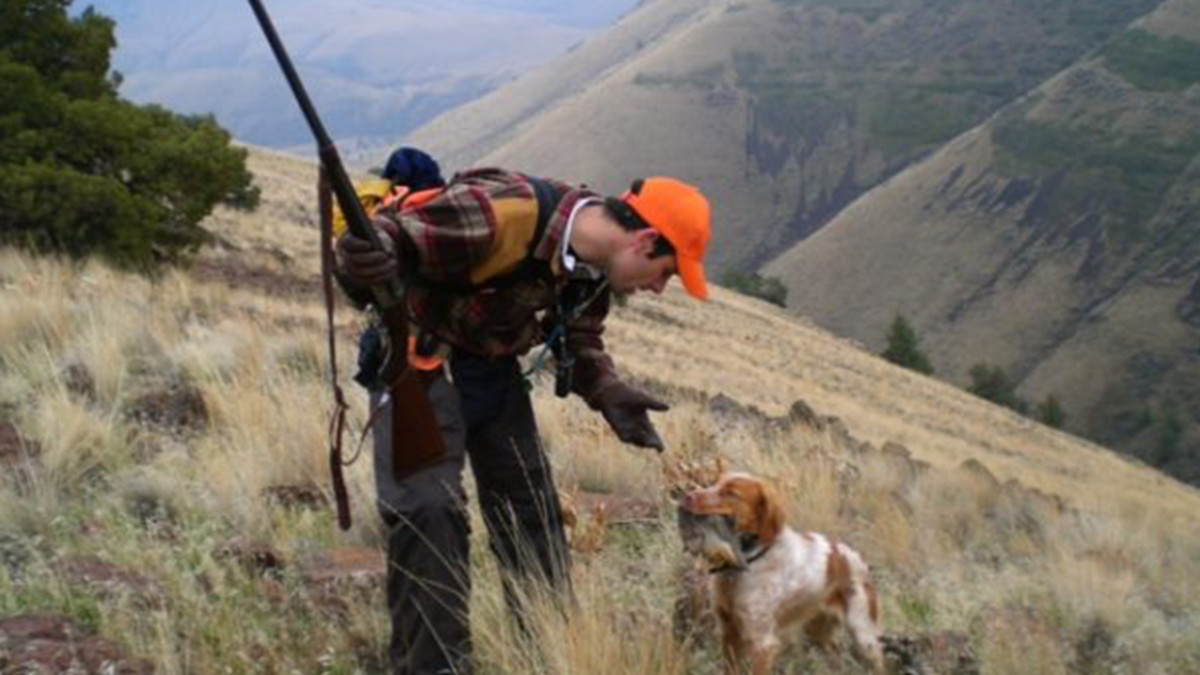
Words by Joseph Furia
A favorite saying of chukar hunters is “the first time you hunt chukar is for fun, every time after that is for revenge.” For those of you who fly fish for steelhead or bow hunt for elk, you’ll recognize similar frustration and satisfaction of stacking the odds against yourself, failing most of the time, and then basking in the euphoria of those moments of success.
It’s more about hunting than shooting. Most public land chukar hunting involves long walks on rugged, steep terrain with a gun in your hand and little actual shooting. To that end, it is important to hike smart, travel light, and enjoy the view.
But shooting does matter. After hiking 12 miles in two days, you finally flush your first covey at inside 40 yards and then you blow all three shots right over the top of them. It’s painful. Most shots at chukar are crossing or going away from you in a downhill direction, not a shot found on the skeet or trap field. To make these shots, keep these three things in mind.
- When you’re expecting chukar to flush, set your feet on stable ground pointed in the direction where you expect to shoot the bird. If you must move, walk slowly and be ready the second you stop, birds gets especially nervous when you stop moving.
- Prior to the flush, relax your eyes rather than looking at specific spots on the ground; when your eyes are relaxed, you pick up movement quicker. Once the birds flush and before you mount, focus on the head of an individual bird, this helps avoid flock shooting which almost always results in a miss.
- Practice mounting your gun at home, a bad mount is responsible for most missed shots. You can tape a flashlight to the end of your barrel and practice swinging and mounting along the edge where the wall and ceiling meet. The light should show a smooth swing with no up and down movement. Let your front arm steer the gun.
Practice in Terrain
The best practice is hiking with a friend along with a hand thrower and some shooting clays in the type of terrain you’ll be hunting.
Early season, you’ll find chukar near water, often lower down in the canyons. By mid-season you’ll find them up on top and on south-facing slopes where they can warm themselves on dark rocks that absorb sunlight. In snow conditions, look for them in rock bands and sage just on the leeward side of ridges.
In light wind, you’ll want to hunt quietly and be prepared for long shots. In heavy wind, you’ll get much closer, but you’ll need to shoot quickly before the birds catch a wing-full of wind and get out of range.
Dogs + Chukar
Dogs find chukar, but their success is greatly increased if you hunt them into the wind whenever possible. Put them above the birds when you have an up-canyon wind, which is almost all the time. Also keep your dog well watered. In basalt country, a pair of rubber dog boots will protect the dog’s pads and increase the length of your hunt.
My favorite hunt with a pointing dog is to run my dog on the ridges from mid- to late-season until he points a covey. Then I’ll sneak down below the dog and walk uphill in order to flush the birds. My shooting percentage doubles when I can get chukar to fly over me rather than shooting at them when they’re flying downhill away from me.
Keep it Light
I know chukar hunters who hunt in spandex leggings and running shoes in order to travel light and cover lots of ground. Chukar hunting isn’t about looks, it’s about efficiency. Leave your heavy tin-cloth pants and shooting jacket in the truck.
Merino wool underlayers, lightweight brush pants, cross-training hiking boots, gloves, a knit hat, a brimmed cap, and a rain jacket will cover ninety percent of your hunts. If it gets really cold, then add heavy wool gloves and gators for snow drifts. A warm jacket is nice for when you stop to take breaks.
What Gun to Use
I have shot wild chukar with everything from a .410 to a 12-gauge, but I prefer 12-gauge and 16-gauge shotguns with improved cylinder and modified chokes in the early season. Late season, I use modified and full chokes. A 28-inch barrel helps with the swing and follow-through. Regardless of the gun, my preferred load remains the same: high brass 6 shot.
Locating Chukar
Chukar typically use the same spots as long as conditions remain the same. When you find a covey, make a mental note or mark it on your GPS and remember under what conditions you found the birds in that location. Chances are, you’ll find them there for years to come.
Follow wounded birds. If you see a chukar rock or drop a leg after you shoot at it, watch it for as long as you can and then head towards it. Because chukar are often flying downhill, they can sail a long distance before falling dead.
Chukar country demands respect. Safety needs to be a top priority. Chukar live in rocky, remote locations with poor footing and poorer cell coverage. If possible, always hunt with a partner and carry a basic medical kit and a basic survival kit space blanket, fire starter, quinine tablets, energy bar, and a knife.
If you’re hunting alone, tell someone where you’ll hunt and when you’ll be home. And solo hunters should stick to stable terrain and, if possible, carry a personal locator beacon. Before you head into a location, ask yourself, “If I break an ankle, how am I going to survive until someone shows up?







Conversation